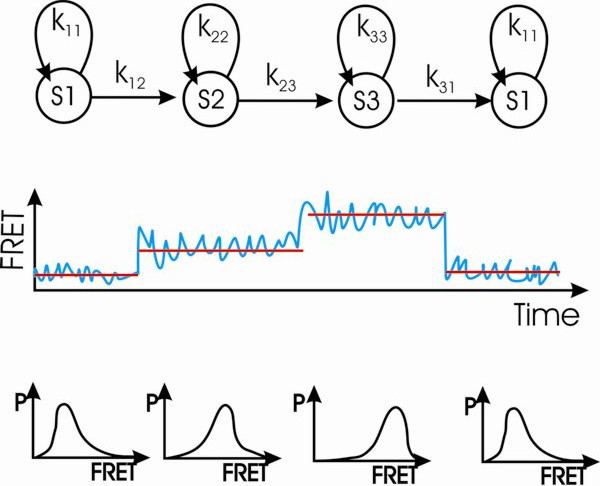Protein dynamics in vitro
Photoswitchable Proteins
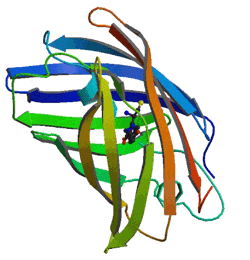
DNA provides an excellent scaffold for constructing biological devices on a nanometer scale [Kukolka et al., Small 2, 2006]. In this context we use DNA to
position fluorophores in the vicinity of a photoswitchable protein. Photoswitchable proteins are of particular interest for constructing nano-bio devices as
they can be used as active elements such as optical switches.
We use single pair FRET on a prism type TIRF setup to investigate Dronpa as a possible optical switch which can be used for photoactivating FRET.
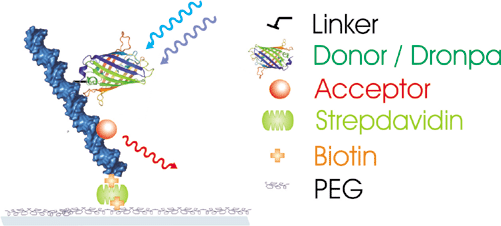
Dronpa is known to exhibit highly reversible photoswitching behaviour with a response time of milliseconds, being switched in a fluorescent state upon illumination with 405 nm and in a non-fluorescent state by 480 nm excitation.
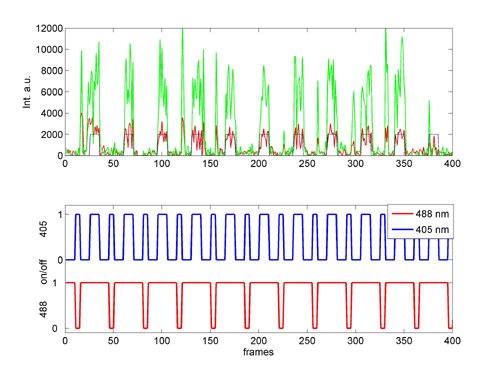
Protein-DNA Interaction
Binding of TBP to the TATA sequence of a eukaryotic gene is the initiating step in DNA transcription – the first process in protein expression. Binding
of TBP into the minor groove of the double helix takes place in several discrete steps and yields a complex bending of dsDNA. To analyze the dynamics of the
TBP binding process, we developed an in vitro single molecule assay based on a single pair Fluorescence Resonance Energy Transfer (FRET). Monitoring the
specific TBP-TATA binding revealed a dynamic process with discrete FRET states which last several seconds, indicating the existence of different intermediate
conformations. In order to evaluate the kinetics between them, we utilize a Hidden Markov Model (HMM) approach. HMM is an unbiased statistical method that
can be used to extract the FRET values, transition rates and number of states based on machine learning.
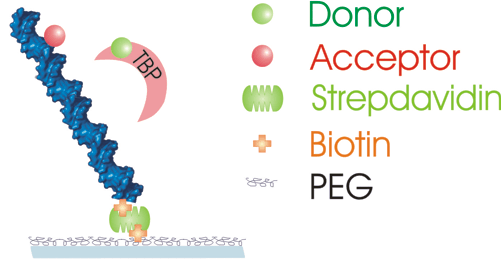
Our aim is to obtain information about the binding pathway based on kinetic information extracted from FRET trajectories.
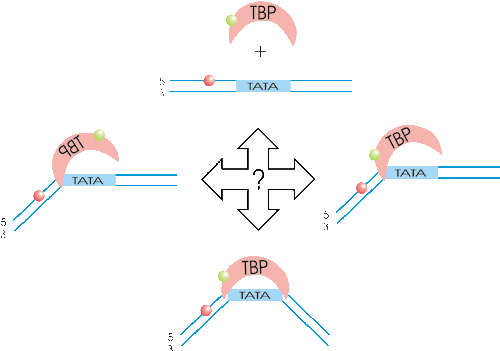
A perquisite to perform such an analysis is the determination of FRET levels and the detection of transitions between them. Depending on the significance of the
signal a deterministic approach (e.g. thersholding) might be sufficient to perform this tasks semi manual. However, in the case where the noise “hides” the
signal to an extend where deterministic selection will jeopardize reliable and reproducible results another approach has to be found.
